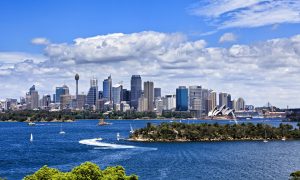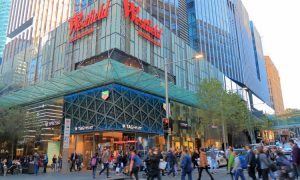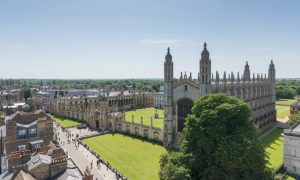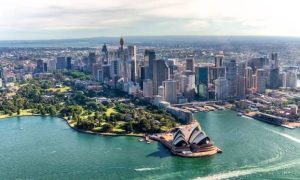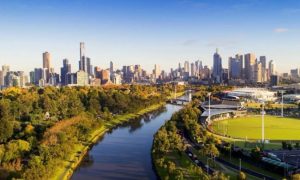Immigration to AustraliaNot only is it a lifestyle change, but it also comes with certain economic planning and financial considerations. Australia is renowned for its high quality of life, but the cost of living varies depending on the city and individual needs. In this article, we'll take a look at three key areas: housing, education and healthcare.immigrantsThe main expenses that you may face after Australia to help migrants better plan their life in Australia.
I. Housing costs: Buying vs. renting costs
Housing is the single most important expense in the cost of living, and prices and rents vary significantly depending on where you live.
1. Cost of buying a house
- Sydney & Melbourne: As the largest cities in Australia, Sydney and Melbourne have higher house prices. The average house price in Sydney is about AUD 1.2 million, while in Melbourne it is about AUD 900,000 dollars.
- Other cities: Cities such as Brisbane, Adelaide and Perth have relatively low house prices, averaging between $500,000 and $700,000 Australian dollars.
- remote area: Remote areas are more affordable, with prices as low as A$300,000 to A$400,000 in some small towns.
2. Rental costs
- Rents are higher in Sydney and Melbourne, with average rents around A$500 to A$700 per week.
- Small and medium-sized cities such as Brisbane and Adelaide have relatively affordable rents of around A$350 to A$500 per week.
- Rental rates are lowest in remote areas at A$200 to A$300 per week.
Tip:
- First time immigrants: It is recommended that you rent an apartment first to familiarize yourself with the local environment before considering purchasing a home.
- Money Saving Strategies: Sharing a room with others can effectively reduce the cost of renting.
II. Cost of education: analysis of costs from kindergarten to university
Australia is renowned for its quality education, with both public and private education systems co-existing, and the cost of education varies significantly at different stages.
1. Kindergarten and pre-school education
- Public kindergartens: Tuition fees are usually low, with an average annual cost of around A$4,000 to A$6,000.
- Private kindergartens: Fees are higher, ranging from AUD 8,000 to AUD 20,000 per year.
- The Australian Government provides eligible families with a child care subsidy (Child Care Subsidy), which can significantly reduce the cost of childcare.
2. Primary and secondary education
- public school: Children of permanent residents and citizens are usually admitted free of charge, subject to a small fee for extracurricular activities.
- private school: Tuition fees are expensive, averaging around A$15,000 to A$30,000 per year, with top private schools costing more.
- international student: Annual tuition fees at public schools are around AUD 8,000 to AUD 15,000.
3. Universities and higher education
- Domestic students: Australian citizens and permanent residents benefit from the government-funded HELP loan program, with average annual tuition fees for undergraduate courses ranging from approximately AUD$6,000 to AUD$10,000.
- international student: Tuition fees for undergraduate programs are higher, averaging AUD 20,000 to AUD 40,000 per year, depending on the program and school.
III. Medical Costs: Analysis of Health Insurance and Out-of-Pocket Items
Australia has a well-established healthcare system, which is divided into the public system (Medicare) and private healthcare services.
1. Public health care system (Medicare)
- Permanent residents and Australian citizens have access to free or low-cost public health services, including general outpatient and inpatient care and essential medicines.
- There is usually no additional cost for Medicare-covered services, and patients are only responsible for a portion of the cost of their prescription medications (about AUD$30 per item).
2. Private medical insurance
- For shorter waiting times or higher quality of service, many people choose private health insurance.
- Average cost:
- Single: approximately A$100 to A$150 per month.
- Families: Approximately A$300 to A$500 per month.
- Private insurance covers additional services such as dental, vision and hospitalization single room charges.
3. Those without Medicare eligibility
- Migrants on temporary visas are required to purchase Overseas Visitor Health Cover (OSHC), the cost of which varies depending on the coverage and the insurance company, and ranges from approximately AUD$500 to AUD$800 per year for a single person.
IV. Other costs of living at a glance
In addition to housing, education and health care, the followingImmigration to AustraliaOther common overheads you may face after:

1. Food and daily consumption
- Supermarket shopping: approximately A$400 to A$800 per month.
- Eating out: An average restaurant meal costs around A$15 to A$25.
2. Transportation costs
- Buses and trains: Transportation costs average A$30 to A$50 per week, depending on the city.
- Car costs: Including fuel, insurance and maintenance, about AUD 500 to AUD 1,000 per month.
3. Utilities and Networks
- Monthly utility costs are around AUD 200 to AUD 300.
- Home internet costs: around AUD 70 to AUD 100 per month.
V. How can the cost of living be effectively managed?
- Choosing the right city
Remote areas and second-tier cities with lower cost of living may be prioritized. - Utilization of government benefits
such as child care subsidies, Medicare and tax credits to reduce expenses. - Rational consumption and savings
Create a budget plan to avoid unnecessary spending.
VI. Summary
Immigration to Australiaof the cost of living varies depending on the individual's lifestyle and location. AlthoughMigration of children from AustraliaThe overall cost of living is high, but its quality living environment, comprehensive welfare system and high-quality education resources make people feel that it is value for money. Through rational planning and smart management, immigrants can not only cope with daily expenses, but also live and work in peace and happiness in this vast land, realizing an overall improvement in the quality of life.


